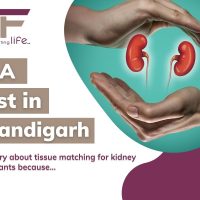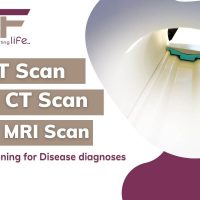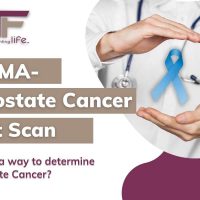Causes of increasing cancer – its prevention and treatment
Cancer – refers to any one of a large number of diseases characterized by the development of abnormal cells that divide uncontrollably and have the ability to infiltrate and destroy normal body tissue.
Cancer often has the ability to spread throughout your body.
Cancer is the second-leading cause of death in the world.
But survival rates are improving for many types of cancer, thanks to improvements in cancer screening, treatment and prevention.
Symptom and sign
Signs and symptoms caused by cancer will vary depending on what part of the body is affected.
Some general signs and symptoms associated with, but not specific to cancer include:
(1)Fatigue
(2)Lump or area of thickening that can be felt under the skin
(3)Weight changes, including unintended loss or gain
(4)Skin changes such as yellowing, darkening or redness of the skin, sores that won’t heal or changes to existing moles
(5)Changes in bowel or bladder habits
(6)Persistent cough or trouble breathing
(7)Difficulty swallowing
(8)Hoarseness
(9)Persistent indigestion or discomfort after eating
(10)Persistent unexplained muscle or joint pain
(11)Persistent unexplained fevers or night sweats
(12)Unexplained bleeding or bruising
Causes
Cancer is caused by changes (mutations) to the DNA within cells. The DNA inside a cell is packaged into a large number of individual genes, each of which contains a set of instructions telling the cell what functions to perform, as well as how to grow and divide. Errors in the instructions can cause the cell to stop its normal function and become cancerous .
A gene mutation can instruct a healthy cell to:
Allow rapid growth. A gene mutation can tell a cell to grow and divide more rapidly. This creates many new cells that all have that same mutation.
Fail to stop uncontrolled cell growth. Normal cells know when to stop growing so that you have just the right number of each type of cell. Cancer cells lose the controls (tumor suppressor genes) that tell them when to stop growing. A mutation in a tumor suppressor gene allows cancer cells to continue growing and accumulating.
Make mistakes when repairing DNA errors. DNA repair genes look for errors in a cell’s DNA and make corrections. A mutation in a DNA repair gene may mean that other errors aren’t corrected leading cells to become cancerous.
These mutations are the most common ones found in cancer. But many other gene mutations can contribute to causing cancer.
causes of gene mutations
Gene mutations can occur for several reasons, for instance:
Gene mutations you’re born with. You may be born with a genetic mutation that you inherited from your parents. This type of mutation accounts for a small percentage of cancers.
Gene mutations that occur after birth. Most gene mutations occur after you’re born and aren’t inherited. A number of forces can cause gene mutations, such as smoking, radiation, viruses, cancer-causing chemicals (carcinogens), obesity, hormones, chronic inflammation and a lack of exercise.
Gene mutations occur frequently during normal cell growth. However, cells contain a mechanism that recognizes when a mistake occurs and repairs the mistake. Occasionally, a mistake is missed. This could cause a cell to become cancerous.
How do gene mutations interact with each other?
The gene mutations you’re born with and those that you acquire throughout your life work together to cause cancer.
For instance, if you’ve inherited a genetic mutation that predisposes you to cancer, that doesn’t mean you’re certain to get cancer. Instead, you may need one or more other gene mutations to cause cancer. Your inherited gene mutation could make you more likely than other people to develop cancer when exposed to a certain cancer-causing substance.
It’s not clear just how many mutations must accumulate for cancer to form. It’s likely that this varies among cancer types.
Risk factors
While doctors have an idea of what may increase your risk of cancer, the majority of cancers occur in people who don’t have any known risk factors. Factors known to increase your risk of cancer include:
Age
Cancer can take decades to develop. That’s why most people diagnosed with cancer are 65 or older. While it’s more common in older adults, cancer isn’t exclusively an adult disease — cancer can be diagnosed at any age.
Habits
Certain lifestyle choices are known to increase your risk of cancer. Smoking, drinking more than one drink a day for women and up to two drinks a day for men, excessive exposure to the sun or frequent blistering sunburns, being obese, and having unsafe sex can contribute to cancer.
You can change these habits to lower your risk of cancer — though some habits are easier to change than others.
Family history
Only a small portion of cancers are due to an inherited condition. If cancer is common in your family, it’s possible that mutations are being passed from one generation to the next. You might be a candidate for genetic testing to see whether you have inherited mutations that might increase your risk of certain cancers. Keep in mind that having an inherited genetic mutation doesn’t necessarily mean you’ll get cancer.
Health conditions
Some chronic health conditions, such as ulcerative colitis, can markedly increase your risk of developing certain cancers.
Environment
The environment around you may contain harmful chemicals that can increase your risk of cancer. Even if you don’t smoke, you might inhale secondhand smoke if you go where people are smoking or if you live with someone who smokes. Chemicals in your home or workplace, such as asbestos and benzene, also are associated with an increased risk of cancer.
Cancer can cause several complications including:
Pain. Pain can be caused by cancer or by cancer treatment, though not all cancer is painful. Medications and other approaches can effectively treat cancer-related pain.
Fatigue. Fatigue in people with cancer has many causes, but it can often be managed. Fatigue associated with chemotherapy or radiation therapy treatments is common, but it’s usually temporary.
Difficulty breathing. Cancer or cancer treatment may cause a feeling of being short of breath. Treatments may bring relief.
Nausea. Certain cancers and cancer treatments can cause nausea. Your doctor can sometimes predict if your treatment is likely to cause nausea. Medications and other treatments may help you prevent or decrease nausea.
Diarrhea or constipation. Cancer and cancer treatment can affect your bowels and cause diarrhea or constipation.
Weight loss. Cancer and cancer treatment may cause weight loss. Cancer steals food from normal cells and deprives them of nutrients. This is often not affected by how many calories or what kind of food is eaten; it’s difficult to treat. In most cases, using artificial nutrition through tubes into the stomach or vein does not help change the weight loss.
Chemical changes in your body. Cancer can upset the normal chemical balance in your body and increase your risk of serious complications. Signs and symptoms of chemical imbalances might include excessive thirst, frequent urination, constipation and confusion.
Brain and nervous system problems. Cancer can press on nearby nerves and cause pain and loss of function of one part of your body. Cancer that involves the brain can cause headaches and stroke-like signs and symptoms, such as weakness on one side of your body.
Unusual immune system reactions to cancer. In some cases the body’s immune system may react to the presence of cancer by attacking healthy cells. Called paraneoplastic syndromes, these very rare reactions can lead to a variety of signs and symptoms, such as difficulty walking and seizures.
Cancer that spreads. As cancer advances, it may spread (metastasize) to other parts of the body. Where cancer spreads depends on the type of cancer.
Cancer that returns. Cancer survivors have a risk of cancer recurrence. Some cancers are more likely to recur than others. Ask your doctor about what you can do to reduce your risk of cancer recurrence. Your doctor may devise a follow-up care plan for you after treatment. This plan may include periodic scans and exams in the months and years after your treatment, to look for cancer recurrence.
Diagnosis
Cancer screening
Diagnosing cancer at its earliest stages often provides the best chance for a cure. With this in mind, talk with your doctor about what types of cancer screening may be appropriate for you.
For a few cancers, studies show that screening tests can save lives by diagnosing cancer early. For other cancers, screening tests are recommended only for people with increased risk.
Cancer diagnosis
Physical exam. Your doctor may feel areas of your body for lumps that may indicate cancer. During a physical exam, your doctor may look for abnormalities, such as changes in skin color or enlargement of an organ, that may indicate the presence of cancer.
Laboratory tests. Laboratory tests, such as urine and blood tests, may help your doctor identify abnormalities that can be caused by cancer. For instance, in people with leukemia, a common blood test called complete blood count may reveal an unusual number or type of white blood cells.
Imaging tests. Imaging tests allow your doctor to examine your bones and internal organs in a noninvasive way. Imaging tests used in diagnosing cancer may include a computerized tomography (CT) scan, bone scan, magnetic resonance imaging (MRI), positron emission tomography (PET) scan, ultrasound and X-ray, among others.
Biopsy. During a biopsy, your doctor collects a sample of cells for testing in the laboratory. There are several ways of collecting a sample. Which biopsy procedure is right for you depends on your type of cancer and its location. In most situations, a biopsy is the only way to definitively diagnose cancer.
In the laboratory, doctors look at cell samples under the microscope. Normal cells look uniform, with similar sizes and orderly organization. Cancer cells look less orderly, with varying sizes and without apparent organization.
Cancer stages
Once cancer is diagnosed, your doctor will work to determine the extent (stage) of your cancer. Your doctor uses your cancer’s stage to determine your treatment options and your chances for a cure.
Staging tests and procedures may include imaging tests, such as bone scans or X-rays, to see if cancer has spread to other parts of the body.
Cancer stages are indicated by the numbers 0 through 4, which are often written as Roman numerals 0 through IV. Higher numbers indicate a more-advanced cancer. For some types of cancer, cancer stage is indicated using letters or words.
Prevention
Stop smoking. If you smoke, quit. If you don’t smoke, don’t start. Smoking is linked to several types of cancer — not just lung cancer. Stopping now will reduce your risk of cancer in the future.
Avoid excessive sun exposure. Harmful ultraviolet (UV) rays from the sun can increase your risk of skin cancer. Limit your sun exposure by staying in the shade, wearing protective clothing or applying sunscreen.
Eat a healthy diet. Choose a diet rich in fruits and vegetables. Select whole grains and lean proteins. Limit your intake of processed meats.
Exercise most days of the week. Regular exercise is linked to a lower risk of cancer. Aim for at least 30 minutes of exercise most days of the week. If you haven’t been exercising regularly, start out slowly and work your way up to 30 minutes or longer.
Maintain a healthy weight. Being overweight or obese may increase your risk of cancer. Work to achieve and maintain a healthy weight through a combination of a healthy diet and regular exercise.
Drink alcohol in moderation, if you choose to drink. If you choose to drink alcohol, do so in moderation. For healthy adults, that means up to one drink a day for women and up to two drinks a day for men.
Schedule cancer screening exams. Talk to your doctor about what types of cancer screening exams are best for you based on your risk factors.
Ask your doctor about immunizations. Certain viruses increase your risk of cancer. Immunizations may help prevent those viruses, including hepatitis B, which increases the risk of liver cancer, and human papillomavirus (HPV), which increases the risk of cervical cancer and other cancers. Ask your doctor whether immunization against these viruses is appropriate for you.
Treatment
Many cancer treatments are available. Your treatment options will depend on several factors, such as the type and stage of your cancer, your general health, and your preferences. Together you and your doctor can weigh the benefits and risks of each cancer treatment to determine which is best for you.
Cure. The goal of treatment is to achieve a cure for your cancer, allowing you to live a normal life span. This may or may not be possible, depending on your specific situation.
Primary treatment. The goal of a primary treatment is to completely remove the cancer from your body or kill the cancer cells.
Any cancer treatment can be used as a primary treatment, but the most common primary cancer treatment for the most common cancers is surgery. If your cancer is particularly sensitive to radiation therapy or chemotherapy, you may receive one of those therapies as your primary treatment.
Adjuvant treatment. The goal of adjuvant therapy is to kill any cancer cells that may remain after primary treatment in order to reduce the chance that the cancer will recur.
Any cancer treatment can be used as an adjuvant therapy. Common adjuvant therapies include chemotherapy, radiation therapy and hormone therapy.
Palliative treatment. Palliative treatments may help relieve side effects of treatment or signs and symptoms caused by cancer itself. Surgery, radiation, chemotherapy and hormone therapy can all be used to relieve symptoms and control the spread of cancer when a cure isn’t possible. Medications may relieve symptoms such as pain and shortness of breath.
Palliative treatment can be used at the same time as other treatments intended to cure your cancer.
Surgery. The goal of surgery is to remove the cancer or as much of the cancer as possible.
Chemotherapy. Chemotherapy uses drugs to kill cancer cells.
Radiation therapy. Radiation therapy uses high-powered energy beams, such as X-rays and protons, to kill cancer cells. Radiation treatment can come from a machine outside your body (external beam radiation), or it can be placed inside your body (brachytherapy).
Bone marrow transplant. Bone marrow transplant is also known as a stem cell transplant. Your bone marrow is the material inside your bones that makes blood cells. A bone marrow transplant can use your own cells or cells from a donor.
A bone marrow transplant allows your doctor to use higher doses of chemotherapy to treat your cancer. It may also be used to replace diseased bone marrow.
Immunotherapy. Immunotherapy, also known as biological therapy, uses your body’s immune system to fight cancer. Cancer can survive unchecked in your body because your immune system doesn’t recognize it as an intruder. Immunotherapy can help your immune system “see” the cancer and attack it.
Hormone therapy. Some types of cancer are fueled by your body’s hormones. Examples include breast cancer and prostate cancer. Removing those hormones from the body or blocking their effects may cause the cancer cells to stop growing.
Targeted drug therapy. Targeted drug treatment focuses on specific abnormalities within cancer cells that allow them to survive.











Comments